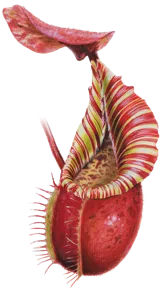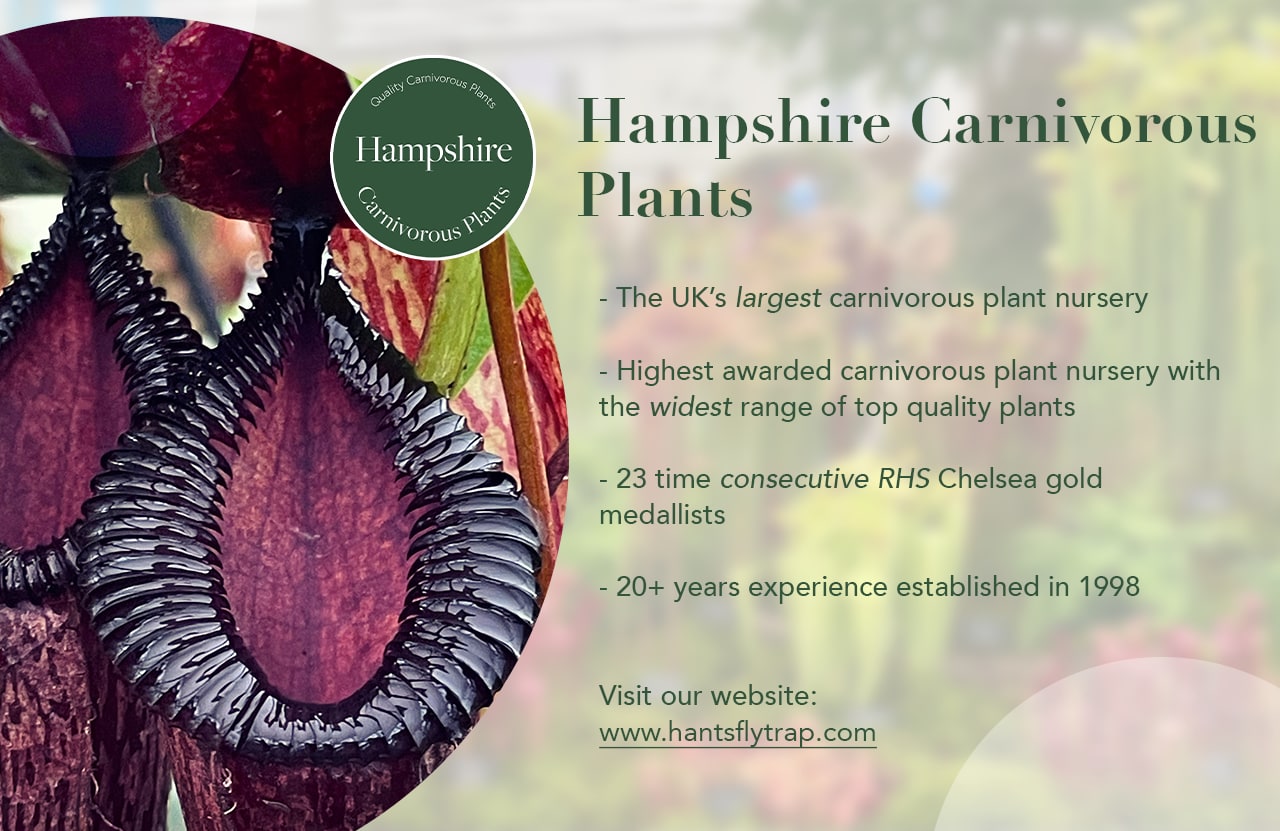Nepenthes undulatifolia
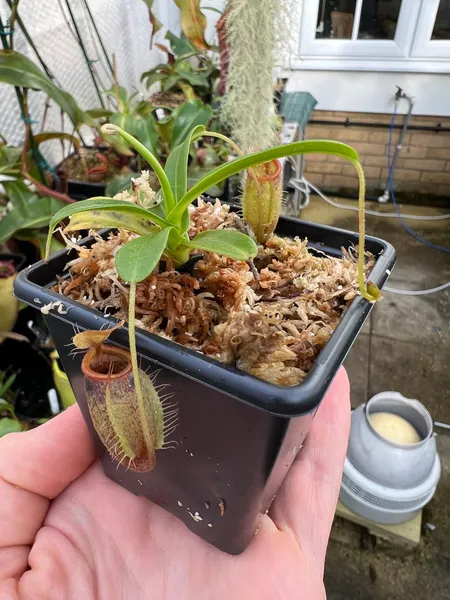 A Nepenthes undulatifolia seedling, as I received it many years ago
A Nepenthes undulatifolia seedling, as I received it many years ago 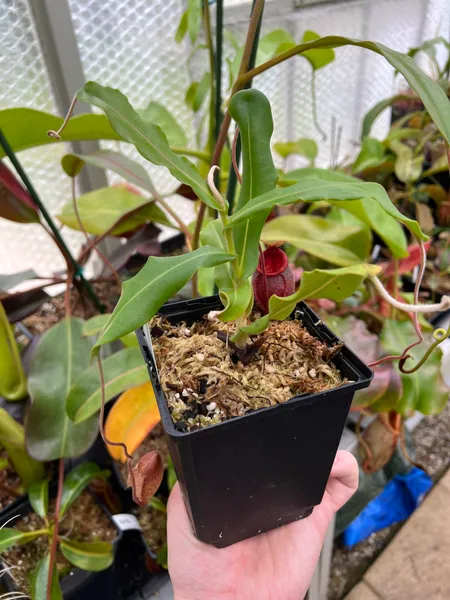 Just a couple of years later - this species is fairly fast for a highlander
Just a couple of years later - this species is fairly fast for a highlander 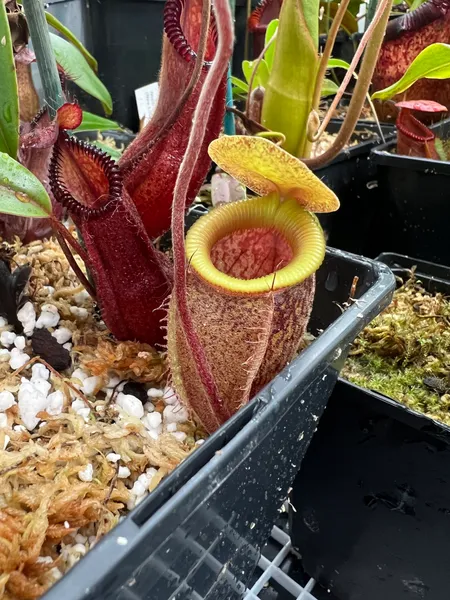 Lovely yellow peristome on large tubby pitchers
Lovely yellow peristome on large tubby pitchers 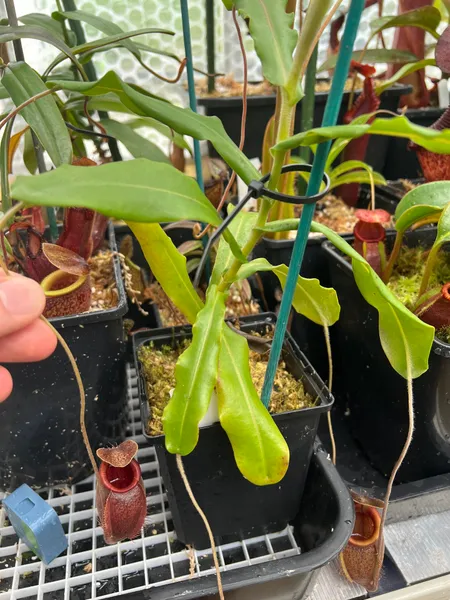 My large specimen of N. undulatifolia, with wavy leaf edges and lovely egg-shaped pitchers
My large specimen of N. undulatifolia, with wavy leaf edges and lovely egg-shaped pitchers 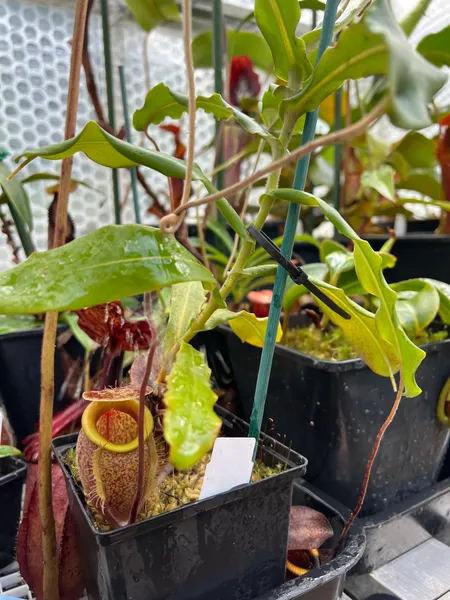 Note the indumentum - leaves and stem are covered with a coat of white hairs
Note the indumentum - leaves and stem are covered with a coat of white hairs 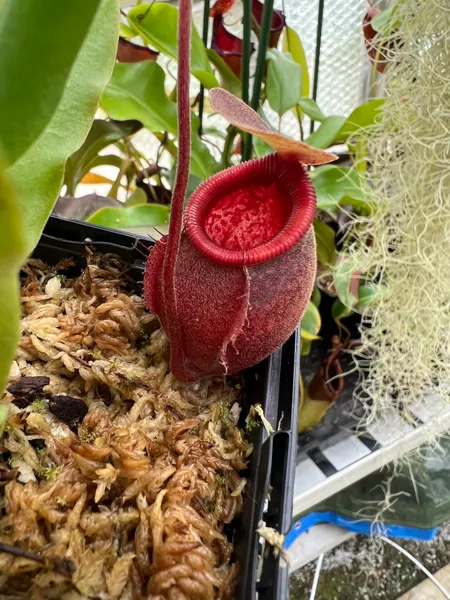 Pitchers on this species can range from lime green, to yellow, to deep red, as on this individual
Pitchers on this species can range from lime green, to yellow, to deep red, as on this individual 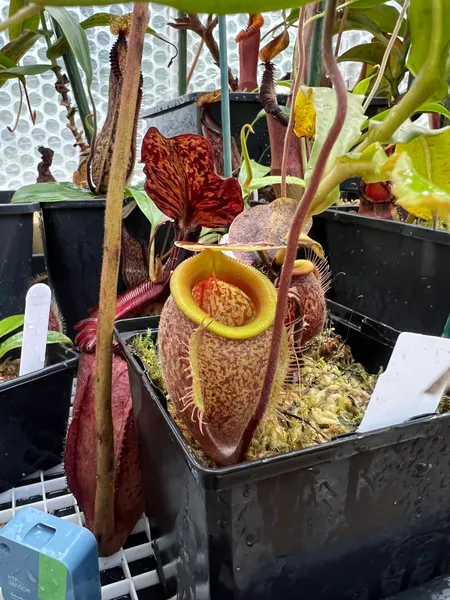 Tubby lower pitcher on N. undulatifolia
Tubby lower pitcher on N. undulatifolia Description & Care
Nepenthes undulatifolia is a rare and fascinating highland species from Sulawesi. It’s known to grow on just two remote mountain tops, both of which are very small populations threatened by poaching. Until recently this extremely rare species was seldom seen in collections, and all cultivated specimens were grown from wild-collected seed. However, thanks to the tireless efforts of botanists like Andreas Wistuba, this wonderful plant is now somewhat easier to obtain - the first horticulturally-produced grex of seeds has been produced, and multiple individuals are now in tissue culture. That said, it’s still not exactly easy or cheap to obtain.
The species is named for its wavy leaf margins (which undulate), but this isn’t its only recognisable trait. This is a highly distinctive plant, which can easily be identified by its very round tubby pitchers, the dense coat of white hair which covers the plant’s stem, and the peltate tendril insertion (meaning the tendril joins the lower surface of the leaf, not the leaf tip, similar to N. rajah and N. peltata).
The pitchers vary in colour between individuals. I’ve seen some plants with lime green pitchers while others are orange or even deep red. The lowers have prominent frilly wings running down the front, and a round, almost horizontal pitcher opening.
My plant - which came from the first horticulturally-produced grex made by Wistuba in Germany - is an easy grower and faster than many of my other highlanders. It definitely sulks from time to time, probably when the temperatures get a bit too high for its liking in summer. It also prefers a bit of shade, so I’ve placed it in a dimmer spot in the greenhouse.
In short, I’d highly recommend N. undulatifolia for any highland Nepenthes collection. It’s a charming, easy-growing, and very distinctive species with many lovely and unique characteristics.
How I Grow It
| Media | Long fibre sphagnum moss, perlite, and - optionally - orchid bark (2:1:1). |
| Water | Damp but not wet. |
| Light | This species can be acclimated to lower light levels, a bit like N. hamata. |
| Fertiliser | Maxsea or liquid orchid feed in the pitchers, every two weeks. |
| Temperatures | 12°C (54°F) minimum year-round, with summer highs of ~ 30°C (86°F). A proper highlander, it doesn't like the summer highs. |
| Humidity | 70% during the day, rising to over 90% at night. |
Learn more about cultivation with my guide to growing Nepenthes.
Day & Night Temperatures
Nepenthes undulatifolia is a highland species, found at elevations of between 1750 and 1850 meters. This range is highlighted in orange above, and equates to temperatures of approximately 23 - 26°C during the day, and 13 - 16°C at night.
Habitat
| Native to | Sulawesi |
| IUCN Red List status | Not Evaluated |
| Natural hybrids | None known |
Buying N. undulatifolia
| Availability | Becoming easier to obtain thanks to hort-seed and tissue culture, but still a rarity. |
| Borneo Exotics codes |
|
| Recommended nursery | California Carnivores Hampshire Carnivorous Plants |
